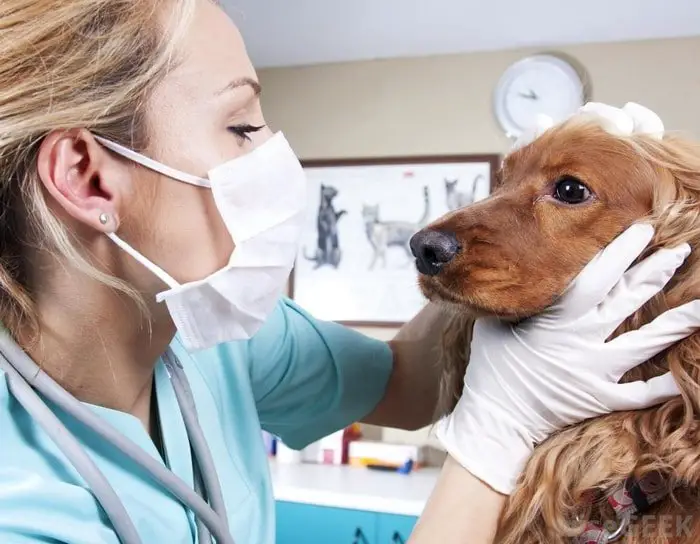The alternative name of Canine Parvovirus (CPV) Infection is Canine parvovirus enteritis, which may occur in domestic dogs, bush dogs, foxes, raccoon dogs. CPV is first recognized in the late 1970s as a genuinely new infection of dogs causing a rapid-onset, severe viral enteritis and, in young dogs, myocarditis. CPV enteritis is the most common, highly contagious disease of dogs.
Etiology and Epidemiology of Canine Parvovirus
Canine parvovirus (CPV-2) is the primary cause of systemic and intestinal infection in domestic dogs, younger than six months of age — the most CP results from exposure to contaminated feces. Besides, people, instruments(equipment in veterinary clinics or kennel), insects, rodents can serve as vectors. The transmission of CPV to susceptible dogs occurs by way of oral, nasal exposure, usually with contaminated faces.
Read Also: Most Important Facts Of Dog Behavior for New Dog Owner
Clinical Signs of Canine Parvovirus
Clinical signs are associated with disease in the two distinct organs system, the gastrointestinal tract, and the myocardium. Clinical symptoms associated with Canine Parvovirus Infection in dogs are highly variable and may range from inapparent infection to acute fatal diseases. Vomiting, Diarrhoea(frequently associated with blood), Anorexia, and dehydration are the clinical signs of CPV infection.

Canine Parvovirus in Puppy
The parvovirus in a puppy is a very risk factor which younger than four months old.CPV myocarditis can develop in puppies younger than eight weeks of age or from infection in utero. Affected dogs are either found dead or die following a brief episode of discomfort and dyspnea. If your puppy shows this kind of signs, you must have to contact your veterinarian as early as possible.

Diagnosis of Canine Parvovirus
CPV diagnosis is based on the dog’s history, clinical signs of the sudden onset of a foul-smelling of bloody diarrhea in a young (<2 years) dogs; hematology, and tests to detect CPV antigen in feces. In the acute disease, you should found profound leukopenia and lymphopenia which will develop within 7-10 days following exposure.
Treatment and Prevention of Canine Parvovirus
There is no specific drug available which kills the parvovirus infection. Treatment will start immediately because it should support the dog’s body immune system. Intravenous replacement of fluid and electrolytes is the principal goal of therapy in dogs. Antimicrobial agents, e.g., ampicillin are indicated. Early detection and careful treatment are essential to parvovirus infection.

Isolation and identification of the affected dogs as early as possible because it minimizes the spread of infection. The virus is particularly resistant to detergents and most disinfectants. Sodium hypochlorite is an effective disinfectant which is cleaned the kennel and the other area to control the spread of infection. However, when it serious condition you must have to contact a veterinarian for the specific diagnosis and treatment.
Prognosis of Canine Parvovirus
The prognosis for recovery from CPV infection following the first seven days of enteritis is good to excellent in the absence of secondary complications, e.g., sepsis. The prediction of puppies with CPV-induced myocarditis is poor to grave.
In Final Talk About Canine Parvovirus
When you prevent the infection, you should have to know the actual reason for the disease. You have to do the annual vaccination program for adult dogs. Both killed and lived CPV vaccine are available, and you have to provide excellent immunity in most dogs. Finally, you always contact a veterinarian who gives you a piece of good advice for the parvovirus infection.